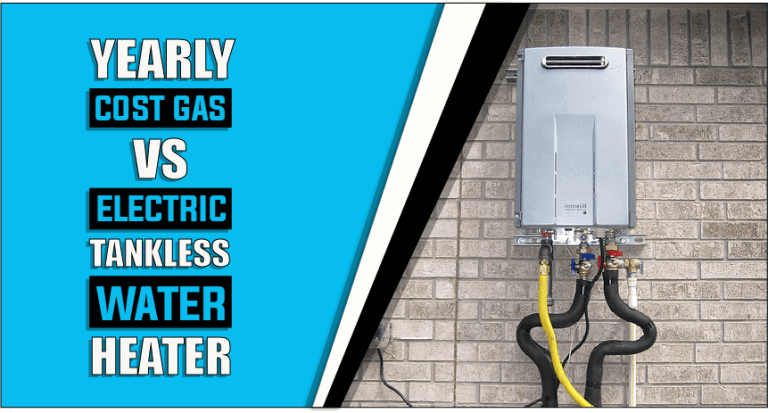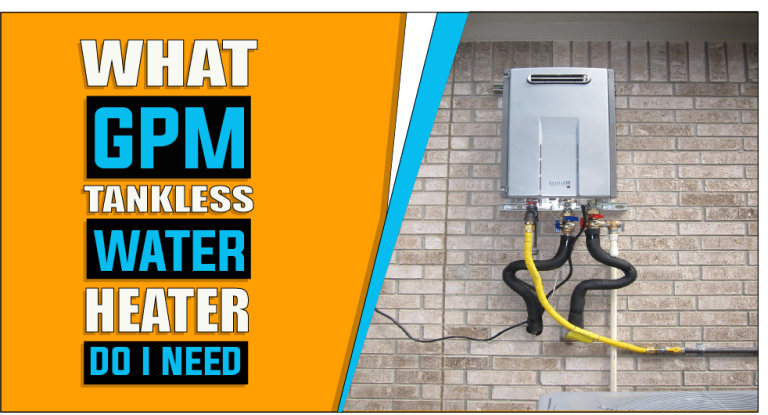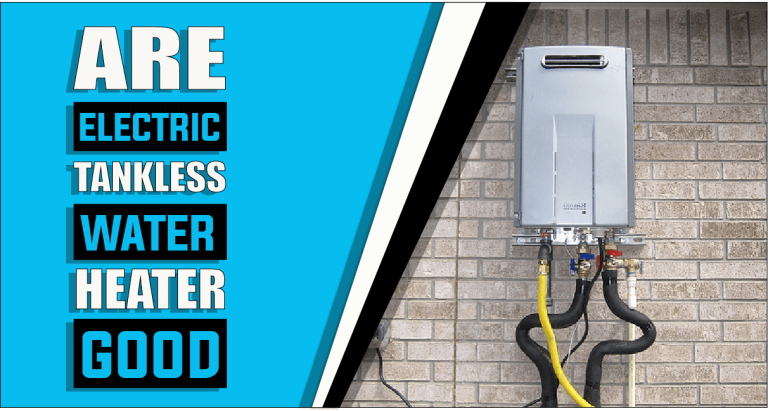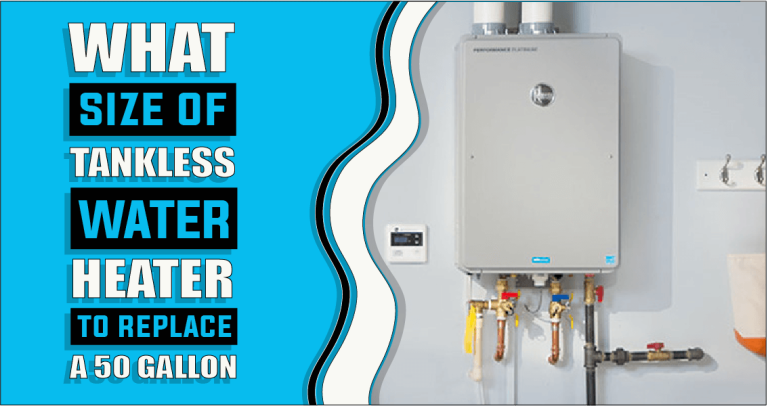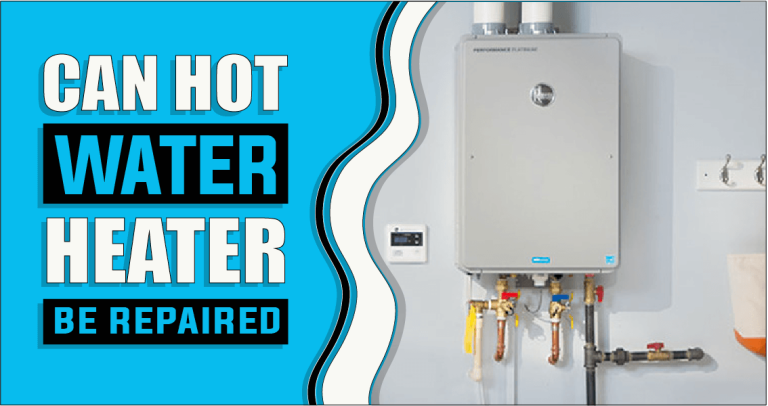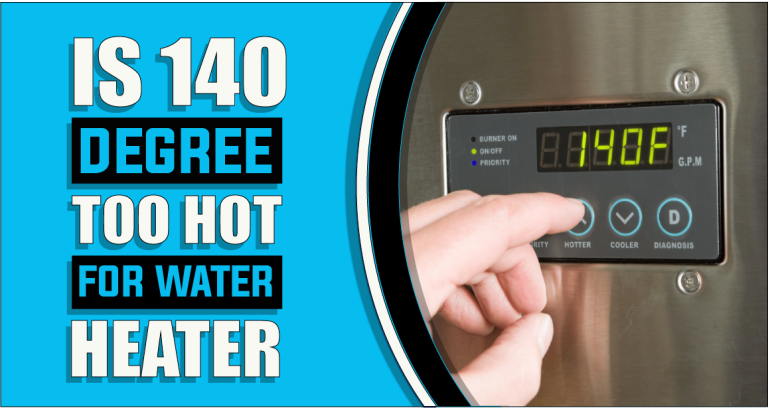What is the Maximum Temperature for a Hot Water Heater – The Truth Reveals
A water heater is a household appliance that heats and stores water for bathing, laundry, cleaning, and other purposes. The maximum temperature at which a water heater can safely operate varies depending on the type of heater. Homeowners should be aware of the maximum temperature for their specific model to ensure safe use. The temperature of a household’s hot water supply is regulated by a thermostat on the heater itself. What many people may not realize, however, is that there are maximum temperatures at which these appliances can operate safely. This blog post will explore the what is the maximum temperature for a hot water heater and provide some tips on how to keep them running properly.

What is the maximum temperature for a hot water heater?
A water heater’s maximum temperature is commonly set at 120 degrees Fahrenheit. However, the exact temperature setting can vary depending on the type of water heater, as well as its age and condition. Some more recent models might have a temperature range of up to 140 degrees Fahrenheit. To ensure optimum safety and performance, it’s important to consult the manufacturer’s recommendations regarding your specific water heater model. Additionally, if you’re concerned about energy efficiency or scalding risks, you should consider turning down the thermostat a few degrees. You can also install an anti-scald device which will limit the maximum temperature that reaches your taps. Doing so could save energy and help keep shower and bath temperatures safe.
The ideal temperature for a water heater depends largely on the type of use it’s being put to. For most households, a setting of 120-130 degrees Fahrenheit is usually sufficient. This will save electricity, guarantee you have plenty of hot water when you need it, and reduce the chance of scorching. For laundry or dishwashing applications, a hotter temperature may be necessary. In this case, you could raise the thermostat to 140 degrees Fahrenheit.
The ideal temperature for your water heater ultimately depends on your needs and preferences. Make sure to consult the manufacturer’s recommendations and adjust the thermostat accordingly. By doing this, you can help guarantee that you will always have access to enough hot water. You should be able to select the perfect temperature setting for your water heater by adhering to these instructions. You no longer have to worry about energy waste or scalding dangers while taking a hot shower or bath.
How do you know if the Temperature on your Hot Water Heater is Correct?
If you’re not sure whether your water heater is set to the correct temperature, there are a few ways to check. You may check the temperature of the water coming from your taps by feeling it. If it’s uncomfortably hot, you may need to adjust the thermostat. Examining the pilot light is another technique to determine if your water heater is operating properly. The heater is at the proper temperature if it is burning brightly. If the pilot light is flickering or off, then the heater needs to be adjusted through the thermostat.
Using a thermometer is yet another simple technique to determine whether the temperature on your water heater is correct. Simply place it in a glass or container of water and turn on the tap. If the temperature reaches 120 degrees Fahrenheit or higher, then you have your ideal setting.
Finally, you can also consult your manufacturer’s instructions for more information on how to properly set the thermostat on your water heater.
You can make sure that your water heater is set to the proper temperature and operating effectively by paying attention to these suggestions. Doing so can help save energy and prevent scalding risks.
How Can you Change the Temperature on Hot Water Heater?
Changing the temperature of your water heater is easy and can be done in a few steps. Find the thermostat first; it should be near the top or the side of the appliance. Then, turn off the power switch (usually found near the thermostat). After that, adjust the thermostat to the desired temperature setting and then turn the power back on. Make sure to double-check your work, as any mistakes could result in an expensive repair bill!
A water heater operates best between 120 and 130 degrees Fahrenheit. Doing so will help ensure that you have plenty of hot water when you need it, while also conserving energy and preventing scalding risks. Moreover, you can adjust the thermostat yourself with ease by following the steps outlined above. With the ideal temperature set on your water heater, you can now enjoy all the luxuries of a hot shower or bath.
What Should you do if your Hot Water Heater is not Functioning Properly?
It is necessary to act right away if your water heater isn’t functioning properly. This is because a damaged water heater could cause serious water damage to your home. You can take the following actions to solve the issue:
Disconnect the water heater at the breaker box
You can also turn off the water heater at the breaker box if you’re worried about any potential safety hazards. Doing this will stop power from going to the water heater and prevent it from overheating or short-circuiting.
Call a Professional to Come and Repair it
Contacting a certified specialist is the most crucial action to take. An experienced technician can assess the situation and identify any underlying problems that may be causing the issue. You might avoid having to pay a hefty repair charge if you do this! Additionally, if you’re unsure of how to adjust the thermostat on your water heater, it’s best to call a professional. They will be able to ensure that your heater is set at the ideal temperature setting, while also making sure it’s functioning optimally.
Wait Until it is Repaired to Use it Again
Once you have had the water heater repaired, it is important to wait until it has been certified as safe before using it again. This will help ensure that your family and home are protected from any potential dangers associated with an improperly functioning water heater.
By following these tips and consulting a professional, you should be able to get your water heater up and running in no time!
What Maximum Temperature is Better, 120 Degrees or 140 Degrees?
Both 120 degrees and 140 degrees are good maximum temperatures, but 120 degrees are better. 120 degrees is ideal for most households and provides a safe temperature for baths and showers without putting your home at risk. Also, 120 degrees is better because it is closer to the human body’s natural temperature of 98.6 degrees Fahrenheit.
Furthermore, 120 degrees Fahrenheit is the optimal temperature for a water heater because it provides the best mix of energy efficiency and performance. At this temperature, the water is hot enough to kill harmful bacteria and parasites, but not so hot that it wastes energy.
While 140 degrees may seem ideal, it can lead to an increased risk of scalding. On the other hand, 120 degrees Fahrenheit is the recommended maximum temperature for a water heater to minimize the risk of scalding. At this temperature, the water will still be hot enough to take a bath or shower, but not so hot that it could cause a burn.
In conclusion, a water heater should operate at a maximum temperature of about 120 degrees Fahrenheit. This will help you save energy while also keeping your family safe from potential scalding risks. Remember to consult with a professional if you’re unsure about how to adjust the thermostat or need help repairing any issues with your water heater.
How Can you Prevent your Hot Water Heater from Overheating
One of the best ways to prevent your water heater from overheating is to ensure that it is properly insulated. This means ensuring that there is adequate insulation around the tank and pipes, as well as making sure that the insulation is in good condition. If your water heater is not properly insulated, it can lead to excessive heat loss and potential damage to your unit.
Another way to prevent your water heater from overheating is to keep the surrounding area clear. This entails ensuring that it is sufficient ventilation around the unit and keeping any flammable materials out of its vicinity. If the surrounding area is cluttered or crowded, it can lead to an increase in the likelihood of an overheating water heater.
Additionally, you can also help prevent your water heater from overheating by regularly maintaining it. This includes checking the hoses and valves for leaks, cleaning out the sediment buildup, and making sure that all components are in good working order. If you catch any problems early on, it can help reduce the risk of an overheated water heater.
Lastly, if you do notice that your water heater is overheating, you should take action right away. One of the best ways to do this is to turn off the power to the unit at the breaker box. By doing this, you can prevent the device from overheating and suffering more harm. To examine and resolve the problem as quickly as possible, contact a qualified technician.
Related Questions:
Around 120 degrees Fahrenheit is the water heater’s maximum safe operating temperature. This is ideal because it provides the best mix of energy efficiency and performance without putting your home at risk of scalding or burns.
If you notice that your water heater is overheating, the first thing you should do is turn off the power to it at the breaker box. Then, make a professional technician’s assessment and solution a top priority.
While temperatures between 140 and 150 degrees may seem optimal, they can increase your risk of scorching. To reduce this risk, it is advisable to keep a water heater’s maximum temperature at or around 120 degrees Fahrenheit. Additionally, it will help you save energy as well.
There is a larger chance of scalding when a water heater is set to temperatures above 120 degrees Fahrenheit. Additionally, if the unit is not properly insulated or maintained, it can lead to an overheating water heater which may cause further damage and even fire hazards. It is important to keep these safety concerns in mind when using a water heater.
Conclusion
To ensure the safety and efficiency of your water heater, it is ideal to keep the maximum temperature around 120 degrees Fahrenheit. Additionally, make sure that you are regularly maintaining and insulating your unit to prevent any potential overheating or damage. If you do notice that your water heater is overheating, take action right away by turning off the power at the breaker box and calling a professional technician to assess and address any issues as soon as possible. To maintain the safety and effectiveness of your water heater, use the guidelines in this blog post!
Ella John is passionate about helping her readers make the best choice when purchasing a heater. She understands that selecting a heater can be difficult and strives to provide information to help make the decision easier. Ella’s website, Heatersinfo.com, provides valuable insight into heating trends and types of heaters and tips on how to care for them. She also advises selecting the right heater based on individual needs and preferences. Her expertise in electronics makes her an excellent source of knowledge, and she is confident that anyone who visits her website will find the perfect heater information for their needs. Ella’s dedication to helping others make educated decisions about buying the right heater is unparalleled, and she hopes to continue offering her expertise for many years. With Ella’s help, finding the perfect heater can be a breeze!

